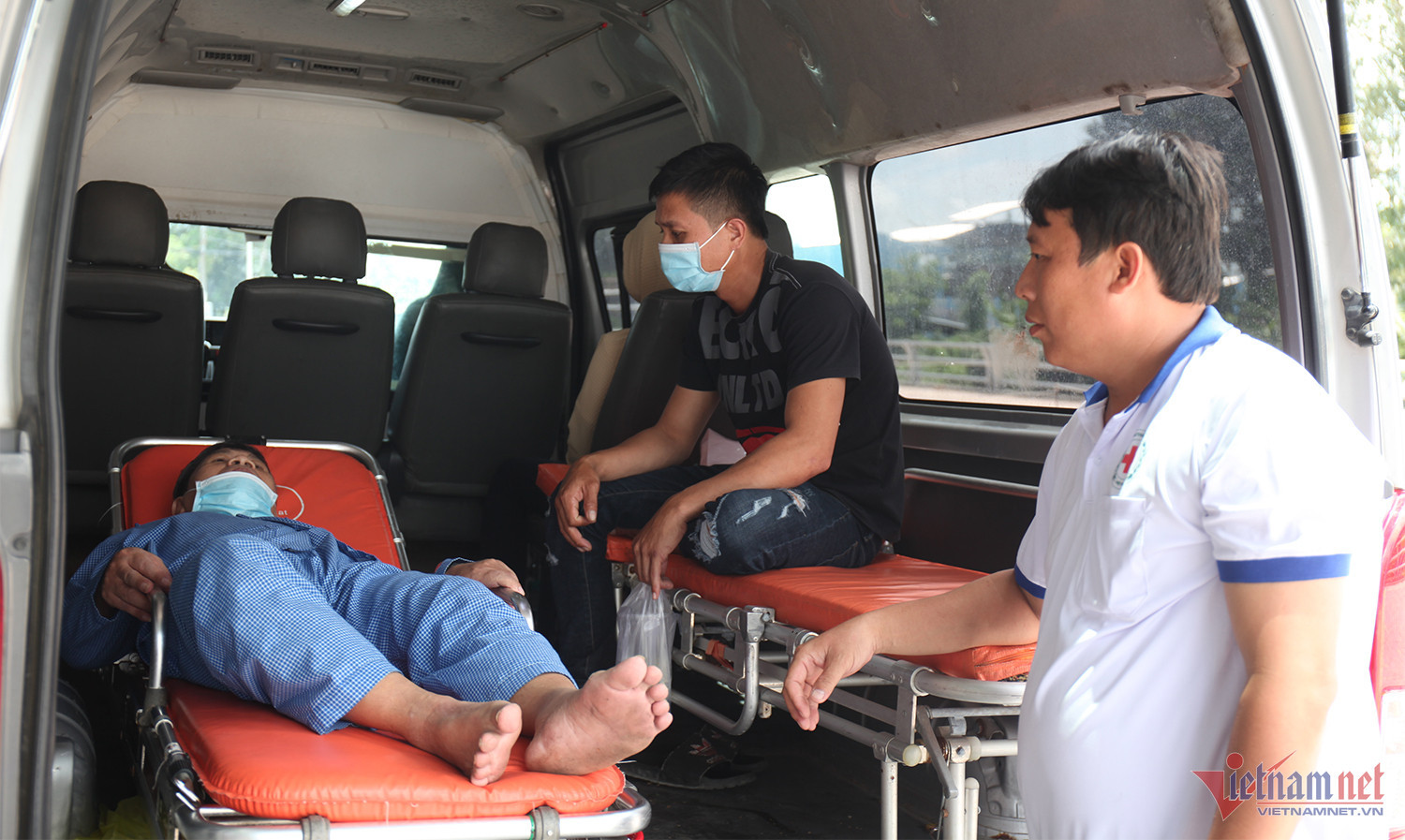
Tac one night was helping his wife, Pham Thi Diem, in O Mon district in Can Tho City, prepare their eatery when his mobile phone rang. He picked up the phone and heard the voice of a young man who entreated Tac to help carry the man’s father to the hospital.
After asking questions to understand the status of the person who needed help, Tac said goodbye to his wife and got into the ambulance. Similar scenes have been seen over the last 20 years.
After fetching the young man and carrying him and his father to Can Tho General Hospital, Tac hurried to return to his daily work.
He is the head and coordinator of the group of drivers who provide free transport service to poor patients called "zero VND ambulance" which has existed for two decades.
Tac is the second child in a family of seven siblings. After getting married, Tac and his wife opened a small eatery near the market.
In 1990, Tac joined a team specializing in providing free meals to patients at the hospital and worked for one week per month there.
At 5am every day, when the city’s dwellers were still in bed, he got up and rushed to the hospital to begin working. Every member of the team undertook his work – washing pots, going to the market, and processing food.
“There were rice, meat and fish, and soup dishes. The menus changed daily to satisfy patients,” Tac recalled.
When delivering donated meals, Tac heard heartbreaking stories about the patients who had died because they could not be brought to hospital soon enough and missed the "golden time" for treatment.
After nearly 10 years of working at the kitchen, in early 2000 Tac set up the zero-dong ambulance group of 10 members. The aim of the group is to help poor patients have more opportunities for patients to receive timely treatment. The group was expanded later by admitting more members. Most of the members of the team work in passenger transport and agriculture.
Pursuing the principle of "giving support for free", the carriers don’t collect fees from patients. They even spend their own money to fill up petrol tanks.
Tac said he would never forget the day when he bought the first ambulance. People came to see him and donated money, from tens of thousands of VND to millions of VND, to support the operation of the team.
“With the VND35 million contributed by people and the amount of VND30 million I had, I bought a used ambulance and refurbished it,” he said.
The ambulance mostly rolls out on the Can Tho – Long Xuyen – HCM City route. Whenever the team members receive requests for help, they set off immediately, no matter whether it is sunny or rainy, day or night.
Tac shed tears when telling a story that happened three years ago.
“The caller was a middle-aged woman from Thai Binh, who said her son was killed in a traffic accident in Hanoi,” he recalled. “The woman tried to seek help to carry the dead body to his hometown in Quang Binh, but failed. After a lot of effort, she was given my phone number and called me to ask for help."
And Tac said yes without hesitancy. He rang two more men of the team and they set off for Hanoi. Three drivers then took turns driving the ambulance from Can Tho in the south to Hanoi in the north which has a distance of 1,800 kilometers. They arrived in the capital city after two days and two nights.
After fulfilling procedures at the hospital, the drivers departed, carrying the dead body and the mother to their home.
“The relatives of the victim gave us a wad of VND500,000 banknotes and thanked us, but we refused the money,” Tac said.
The actions taken by the victim's relatives made the three drivers surprised and moved to tears. When the car turned around, a row of people stood along both sides of the road, bowing their heads to express gratitude to the drivers. Looking in the rearview mirror, all the three men shed tears.
Ha Nguyen